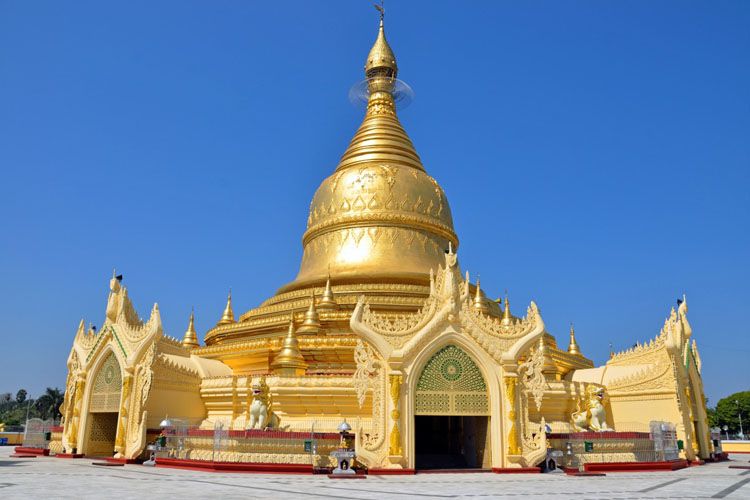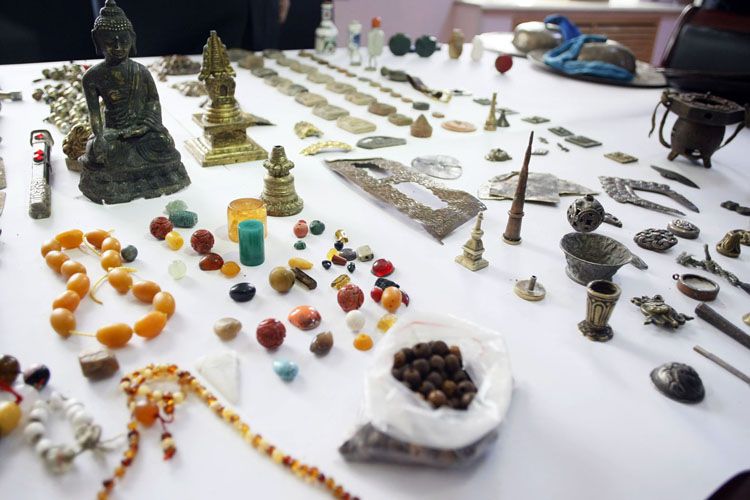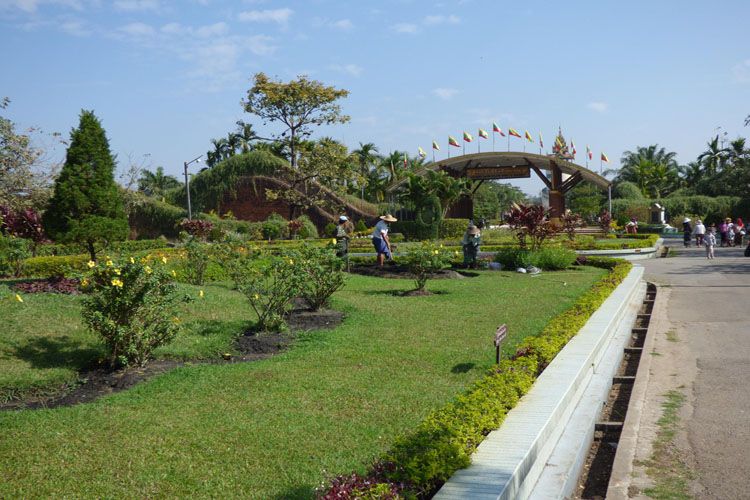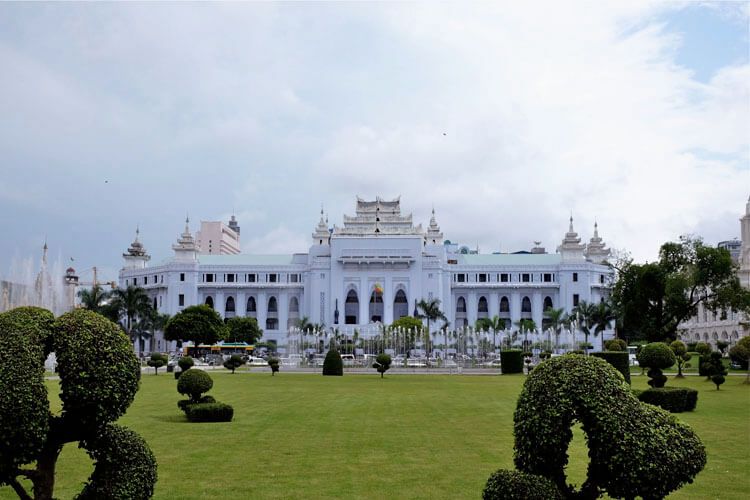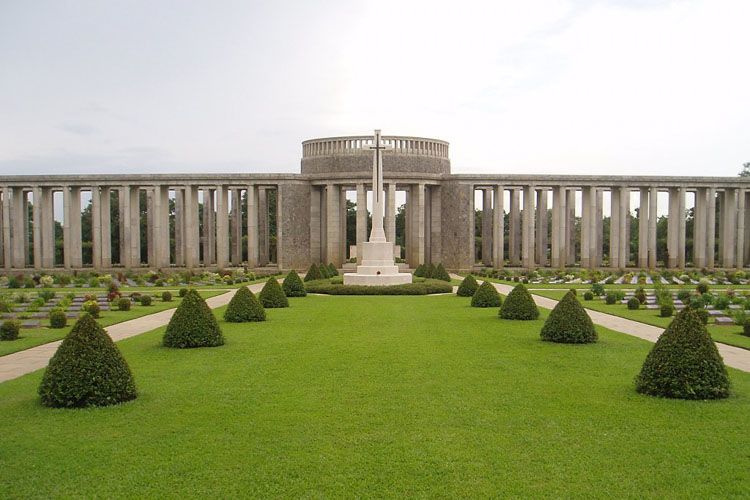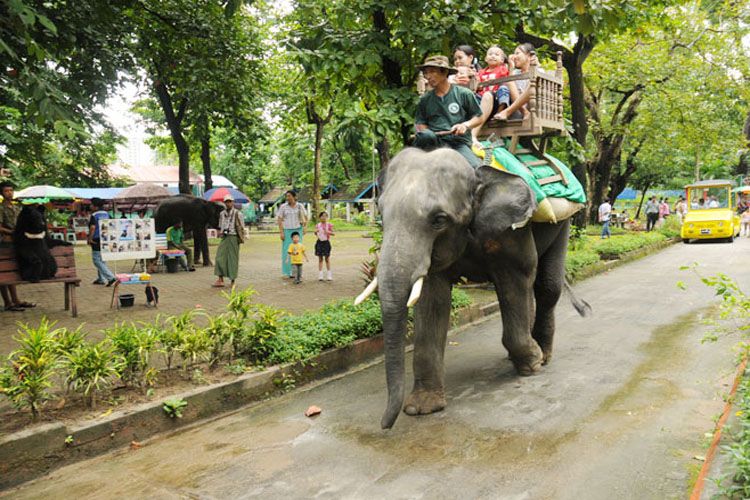Other Articles in Yangon - Places to visit in Yangon
Kyaikkalo

The Kyaikkalo and the Kyaikkalei are the two ancient Pagodas standing on the left side of the highway running from Yangon to Bago.. The pagodas are located in Mingaladon township. Yangon. Their names are with the Mon accent. where Kyaik means pagoda. The pagodas are only a short distance away from the highway and can be seen quite clearly. Among the two pagodas. Kyaikkalo is a much larger and more prominent pagoda. which overlooks the surrounding terrain. The two pagodas are landmarks to travelers going out and coming into Yangon.
The Kyaikkalo and the Kyaikkalei are both associated in legend. During the lifetime of Kakusandha. the first of the five Buddhas of the present age (Baddha Kaba) a certain yakkha (ogre) offered a challenge to Kakusandha Buddha. The latter wishing to subdue the arrogant yakkha. accepted the terms of the wager. which were that the two would play a game of hide and seek. with the loser submitting to the winner. The yakkha. using his supernatural powers. reduced himself to the size of an atom and hid himself in the deepest bowels of the Earth. But Kakusandha Buddha took him out from his place of hiding and placed him on his palm. Now it was the turn of Kakusandha Buddha. He made himself the size of a particle of an atom and walked along the space between the eyebrows of the yakkha. calling out to the yakkha to try and find him. The yakkha only heard the Buddha's voice but could not find him. At last he gave up and submitted to the Buddha who preached the Dhamma for the yakkha to observe. The hillock on which the Buddha hid himself and disappeared from the yakkha came to be called in old Mon "Kyaik-day-kaler". "the Hillock of the Buddha's Disappearance". The hillock on which the yakkha surrendered and submitted to the Buddha came to be known as "Kyaik-day-kalo" meaning the Hillock of submission to the Buddha."
Structure
The Kyaikkalo Pagoda has been an object of veneration throughout Myanmar history. Successive Mon and Bamar kings repaired and renovated it. In the year 747 of the Myanmar Era (A.D. 1385) the Mon king Banyanwe (A.D. 1385 - 1423) better known as Yazadarit (Rajadhiraja) restored and embellished it.
The octagonal shape of the plinth indicates that the pagoda has the Mon architectural design and was originally built entirely of massive blocks of laterite stone. It is a pagoda with a solid stupa. Each side of the octagonal plinth measures 35 cubits in length and 5 cubits in height. The main pagoda stands on the uppermost terrace and it is surrounded by 25 minor stupas. The northern. western and southern sides have stairs leading up to the uppermost terrace. As there are deep precipices on the western and nothern sides. massive retaining walls fortify the precinct.
Festival
The pagodas' festival is held for three days annually. during Tabodwe (January/February). Not only the town folk people. but also people from Yangon and Bago come to worship the pagodas and enjoy the festival. People around come to pay their homage and offer flower. food and fruit.
Other Articles in Yangon - Places to visit in Yangon










